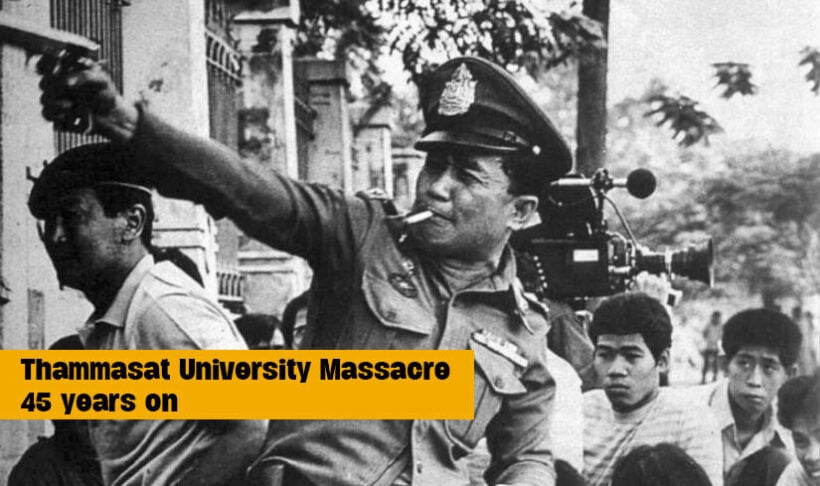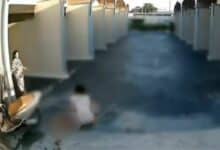Thammasat University Massacre – 45 year on | VIDEO

Yesterday marked the 45th anniversary of the infamous October 6 massacre at Thammasat University in Bangkok in 1976, when 4,000 police and military forces blocked all exits from the university before firing machine guns, assault rifles, grenade launchers, and other military-grade weapons on the students after increased anti-government protests.
Officially, some 45 people were killed and over 145 injured, but historians generally propose the number of casualties was much higher.
The actual events on October 6, 1976, 45 years ago, were preceded by an incident a few weeks before when the tortured corpses of 2 electricity workers were found hanging just north of Bangkok.
The Thammasat University Massacre incident should also be placed in the context of the mid-1970s SE Asian politics and the events swirling around the region. Next door the Americans had just lost the Vietnam War, Loas was over-run by a communist government, and the Khmer Rouge had taken advantage of the instability in Cambodia to impose ‘Year Zero’, a bloody and xenophobic communist dystopia.
In Thailand the politics of the time were already becoming more polarised. Right-wing, loyalist factions, backed by the army, were battling a left-leaning socialist rump, with the student movement leading the way. The events of 45 years ago still resonate with today’s student movement in Thailand openly critical of the Bangkok elite and Thai Army in the protests over the past 12 months.
The return of two highly divisive former tyrannic leaders of Thailand, who had been in exile for three years, at the same time, added more fuel for protests and political unrest.
The discovery of the 2 dead bodies sparked new protests, which culminated in the bloody crackdown by police, army and a right-wing militia at the Thammasat University campus and adjacent Sanam Luang on the morning of October 6, 1976.
The temporary museum uses a range of media to describe the lead up to the massacre, the carnage of that bloody morning, along with vivid images and sounds of the day’s fateful events.
One of the volunteers for the current exhibition is Yannisa and we asked her why it was important to stage the pop up museum…
The display, mostly in Thai, has many photos, some of them synonymous with the incident, others rare insights into some of the people involved at the time. Some of those people were involved with putting the exhibition together.
When you walk into the main hall you’re confronted with a huge landscape photographic mural where augmented reality overlays shadows from the massacre onto today’s peaceful photo of Sanam Luang.
The pop up museum is staged, not only on the 44th anniversary of the Thammasat University Massacre, but at a time when the latest round of student protests are getting louder again. For an entire generation of Thais, the Massacre casts a dark shadow on all political discourse since the event. But now a younger generation is making sure the memories remain fresh, and as a reminder that political over-reach can easily spill over to violence.
Last year, for the 44th anniversary, Tim Newton visited Thammasat University where they had a pop-up museum and display about one of Thailand’s most pivotal political events.
Latest Thailand News
Follow The Thaiger on Google News:


























